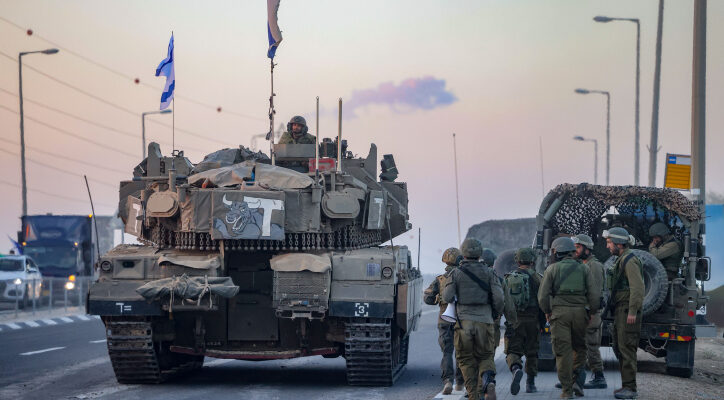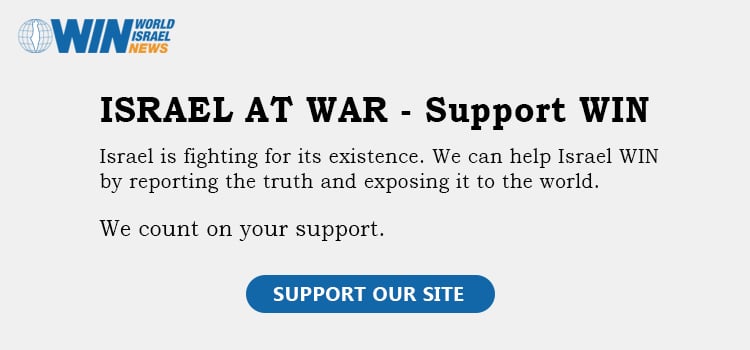The proposed IDF administration is not intended as a permanent solution but rather a necessary step toward establishing a stable and secure environment.
By Yaakov Lappin, JNS
The dispute over the option of establishing a temporary Israeli military administration in Gaza has emerged as a key point of division in Israel’s War Cabinet, with Israeli Defense Minister Yoav Gallant publicly coming out in opposition to the idea on Wednesday.
Israeli Prime Minister Benjamin Netanyahu, while not ruling it out, has yet to endorse the concept publicly.
On Saturday evening, War Cabinet Minister Benny Gantz gave Netanyahu an ultimatum comprising six demands, one of which was, alongside Israeli security control of Gaza, setting up an “American-European-Arab-Palestinian administration that will run, at the civilian level, the Strip, and set up the basis for a future alternative that is not Hamas and not [Palestinian Authority chairman Mahmoud] Abbas.”
There are good reasons to believe that setting up a temporary Israeli military administration is long overdue, and ending Hamas’s rule without this interim step appears fanciful.
An Israeli military administration in Gaza, while provisional, addresses immediate security concerns, fills a vacuum that is currently still being filled in areas of Gaza by Hamas, and prepares the ground for a sustainable moderate Gazan civil governance structure, which will, in reality, take a long time to form.
When it does form, it must operate under the umbrella of Israeli security operations in Gaza, which must continue in Gaza for the foreseeable future.
This could be the only way to avoid the pitfalls and mistakes of the past, when Israel withdrew from Gaza both militarily and at the civilian level, created a vacuum, and did not lift a finger as Palestinian jihadists backed by Iran moved in to build a terror army with genocidal intentions.
While disabling Hamas’s military capabilities is vital and an ongoing IDF effort, establishing a secure environment that prevents a resurgence of Hamas’s political as well as its military regime can only be done at this time through an IDF military administration.
Hamas would otherwise exploit any power vacuum to regain its foothold, as it has already tried to begin to do in places like northern Gaza.
The dismantling of Hamas’s military infrastructure and creating an Israeli military administration are intertwined objectives which, if pursued concurrently, would likely promote long-term stability in a way that no other solution can.
The defense establishment appears opposed to any version of this initiative, presumably due to concerns that it could become a permanent arrangement, draining Israeli military and financial resources.
Yet there are multiple ways to set up a military administration, and the costs of doing so would likely be lower than pursuing a doomed effort to rapidly hand Gaza to a currently non-existent moderate local civil autonomy.
Meanwhile, an international administration as envisaged by Gantz would stand a tiny chance of surviving under current conditions, and would quickly attract Hamas assassins and bombers.
Critics of the Israeli administration option fail to account for the immediate need to stabilize the Strip and provide a framework within which a viable civilian governance can emerge in the future.
Without such stability, the distribution of humanitarian aid remains jeopardized, as seen in the constant theft and hijacking of resources by Hamas and the resultant chaos, and Gazans will continue to believe that Hamas can come back, meaning no one will seriously cooperate with efforts to replace it.
As professor Kobi Michael, senior researcher at the Tel Aviv-based Institute for National Security Studies and the Misgav Institute for National Security and Zionist Strategy in Jerusalem, has previously argued, ensuring that humanitarian aid reaches its intended recipients and convincing Gazans Hamas is no longer a viable option can only be achieved through an IDF civil administration at this time.
All other alternatives seem detached from reality. Allowing Hamas to regroup would spell defeat for Israel; the Palestinian Authority’s weakness, reluctance and incapacity, as well as terror incitement, make it a non-starter.
The impracticality and peril of Gazan clan-based governance at this time, as evidenced by Hamas’s assassination of clan leaders in Gaza, render this option nonviable as well.
A multinational force, while theoretically appealing, lacks practical grounding at present, and would have no ability to take on Hamas militarily. What is left is an Israeli-led interim solution.
The potential for an Israeli military administration becoming a target for terrorism is significant. However, the need to counteract Hamas’s influence and secure civilian projects require a bold approach.
This involves a temporary administration aimed at overseeing the Strip’s civilian functions, while preparing for a future, locally-led civilian governance, financially and political backed by moderate Gulf states, when this actually becomes tenable—which is not now.
While the notion of a temporary IDF administration in Gaza is met with reservations, the alternatives either fail to address the immediate need to place a final nail in the coffin of Hamas’s hopes to rebuild itself, or are currently unfeasible.
The proposed IDF administration is not intended as a permanent solution but rather a necessary step toward establishing a stable and secure environment that can foster the development of a competent, non-radical local governance when this becomes possible.
Through meticulous planning and strategic foresight, this interim solution can best serve Israel’s core security interests and regional stability aspirations, which should come before the interests of even Israel’s allies.





